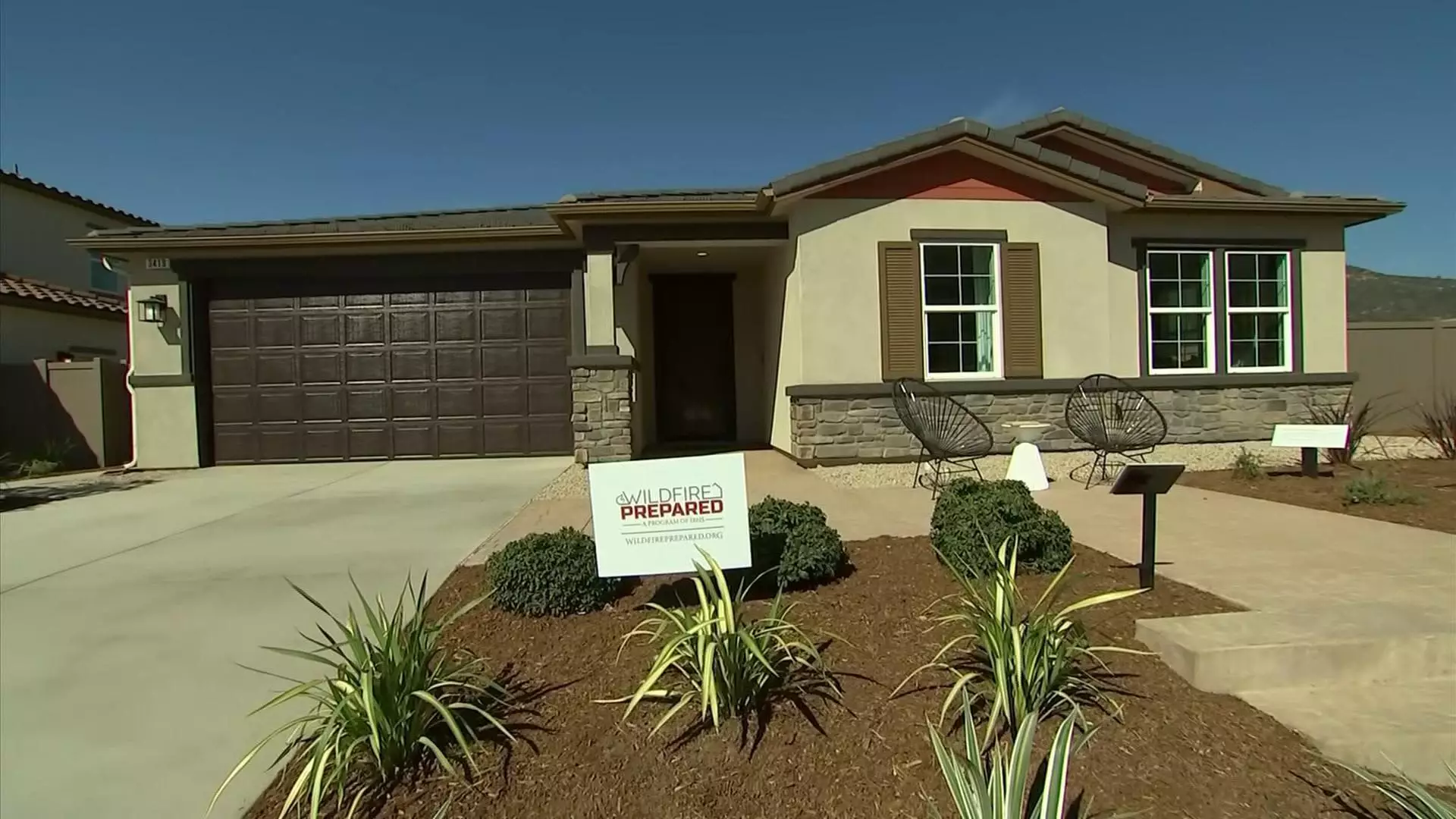In the aftermath of devastating wildfires that ravaged parts of Los Angeles, the urgency to rethink how we build homes in fire-prone areas has reached a critical fever pitch. Among the responses to this growing crisis is a bold move by KB Home, a developer based in California, which has launched what it touts as the nation’s first “wildfire-resilient” community. This initiative is not merely a marketing strategy; it’s a desperate attempt to innovate amidst mounting natural disasters exacerbated by climate change. Yet, one must wonder: is merely building homes to withstand wildfires enough to address the deeper issues at play?
The Infrastructure of Resilience
Located in Escondido, just outside San Diego, KB Home’s new community will feature 64 single-family homes designed to meet rigorous wildfire resilience standards set forth by the Insurance Institute for Business & Home Safety (IBHS). These homes are engineered to withstand the three primary threats of wildfires: flying embers, flames, and radiant heat. Equipped with non-combustible materials such as stucco and fiber cement, tempered glass windows, and strategically designed defensible space, these homes represent a significant leap forward in construction and safety.
However, the revelations behind these innovations reveal a troubling narrative. Why are we only now prioritizing fire-resistant construction after years of catastrophic losses? The traditional methods of home building have failed too many families, and while KB Home’s initiative is commendable, it may dangerously skirt the larger systemic issues related to environmental policies and climate change adaptation strategies.
Costs versus Community Safety
Steve Ruffner, KB Home’s regional general manager, has noted the precarious balance between affordability and safety. While the intention is to create homes that the average family can afford, with prices ranging from $1 million to slightly lower amounts—still significantly above the average Californian’s means—one must consider who exactly will benefit from this innovation. Yes, measures to protect homes are critical, but what about the families who cannot afford such prices living in high-risk zones?
Ruffner admits that developing fire-resistant homes has forced them to rethink architectural designs. This leads to a pertinent question: how can we scale these innovations in a way that does not exclude low- and moderate-income families who face the biggest risks? The premise of affordability becomes a hollow promise if it only caters to a certain economic demographic.
The Critical Role of Insurance
As Roy Wright, CEO of IBHS, points out, the landscape of insurance in California has changed drastically due to increasing wildfire risk; insurers are pulling back, leaving many homeowners vulnerable. A home may be fire-resilient, but if homeowners struggle to even procure insurance for their properties, what is the value of that resilience? This reflects a failure of the insurance infrastructure to evolve alongside the changing climate.
KB Home’s initiative is not just about building; it calls for a broader reassessment of regulatory practices and communal priorities. Housing and insurance policies must align with environmental realities; otherwise, the new homes being built could become financial liabilities rather than sustainable assets.
Lessons from History and Future Imaginings
The innovative homes built under this project boast features such as wide spacing to reduce fire spread, a concept that reflects invaluable lessons learned from past disasters. History has shown us that merely responding to crises is insufficient; we must proactively anticipate future challenges. Yet this new development is no silver bullet. Homeowners and local governments must also confront the surrounding environment through landscaping, firebreaks, and community readiness to truly build resilience against future wildfires.
As we contemplate KB Home’s experimental community as a “test bed,” it raises the bar for building standards across the nation. While KB Home is leading the charge amongst production builders, there’s an urgent need to galvanize general interest amongst all builders to prioritize fire-resistant standards, thereby creating a new norm in home construction.
The challenge lies in transitioning from reactive measures to a multidimensional approach that integrates community needs, regulatory frameworks, and a forward-thinking perspective on environmental change. It is imperative that we arm ourselves with knowledge and effective policy to mitigate the devastation wrought by wildfires, or we risk suffering the consequences again. The future of home building in wildfire-prone areas must embody innovation that not only protects but also serves the greater good.


Leave a Reply